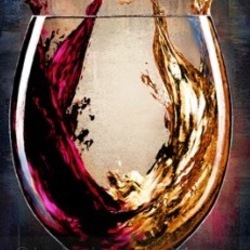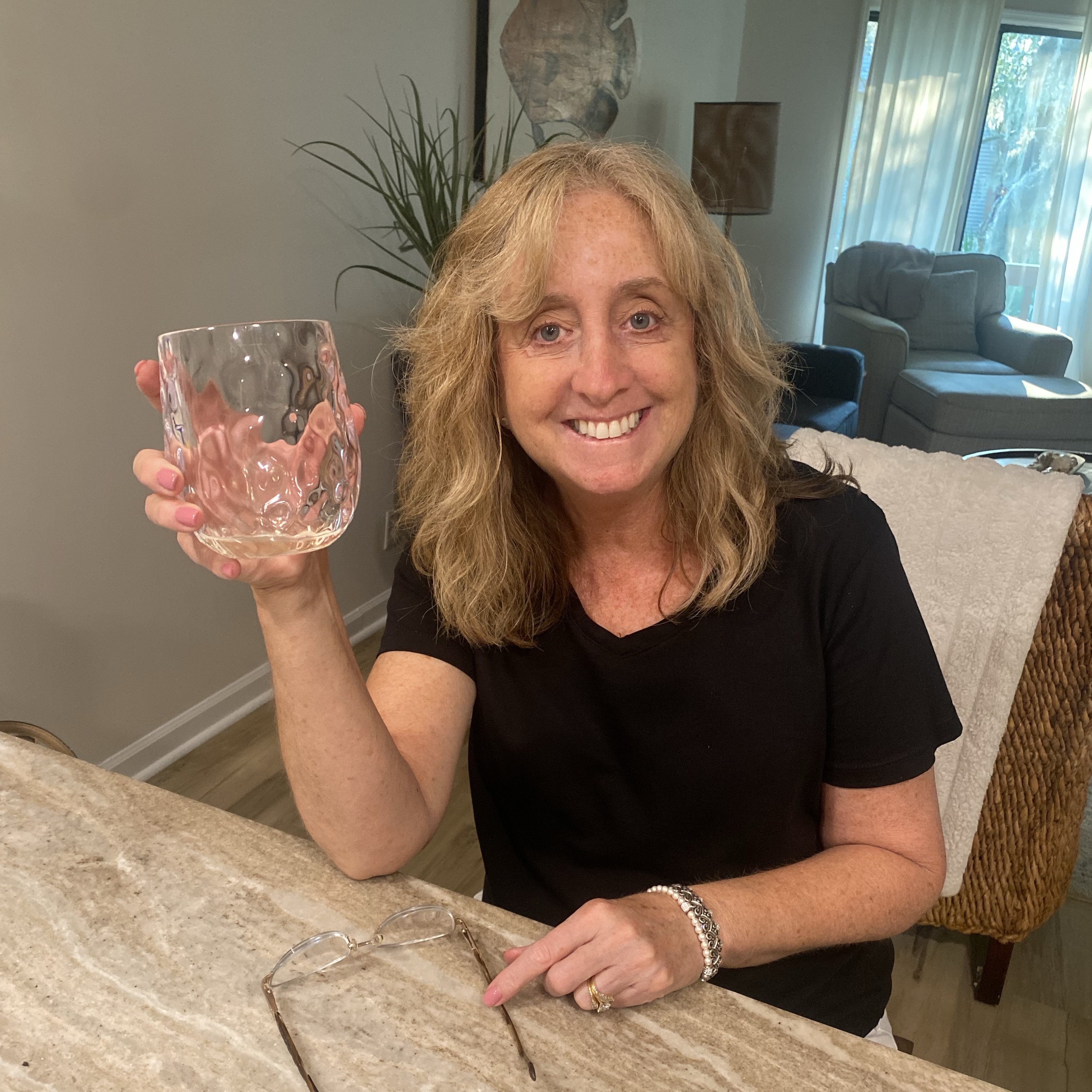Natural Process Alliance
The Naked Grape
Naked Truth #1 California Chardonnay
The un-oaked process allows more of the natural flavors to come through. Enjoyed it. — 8 years ago
Costantino
De Aetna Etna Rosso Red Blend 2015
From magnum @Ted Corvey - immediate touch of spritz from natural wine making process followed by bright, fresh, not quite ripe cherry, a hint of funk, and up front acid made this a great food wine, not overly complex - good but not my favorite on the 🌋 — 8 years ago
Cantina della Torre
Albertone Vino Rosso
This red wine is obtained by a natural drying process after harvest. Thanks to this unique process the grapes develop an extremely intense and complex flavor and gives the Albertoni great strength and structure — 9 years ago
Leonard Oakes Estate Winery
Pétillant Naturel Riesling
Best Pet Nat I've put in my mouth. Respects the grape and respects the process. Floral, apples and citrus. Throw a little earthy minerality and some yeasty funk, you got yourself one heck of a austere wine. Petillant Natural from NYS, it can be done. It is done. This funeral director thinks the label rocks. #niagara #nyswine #nydrinksny #riesling #sparkling #pétillantnaturel #petnat — 9 years ago
Collard-Picard
Essentiel Champagne Blend 2008
After enjoying a glass of the house champagne at the Orlando Waldorf Astoria, I asked the waiter to uncork the bottle I brought of 2008 vintage Essentiel from our friends, Olivier Collard and Caroline Picard proprietors of Maison Collard-Picard in Epernay, France. With my first sip of this delicate balance of Chardonnay, Pinot meunière, and Pinot noir I was transported back to my last visit to the region. I remembered how Olivier takes such great care in producing wines that are a departure from the ordinary. Aging in gigantic, neutral oak barrels, and using a refined yet natural approach, I savor each beautifully balanced sip. The color was a very pale gold that sparkled with the tiny bubbles as they formed a tidy dance in the flute. Olivier is mindful of the natural process in creating his wines. He does not add sugar during the dosage process, yet he ads a touch of naturally sweet wine which is a departure from tradition. Olivier has taken many years of family history in producing champagne and added his own, special touch. To experience any one or all of his suite of wines is truly something special. #champagnetoujours — 9 years ago

Nos Dos
Sisto NA12 Nebbiolo
Freedom to make and unmake.
Carussin's the name of the winery, does exist since 1927, it is located in San Marzano Oliveto (Nizza Monferrato/Canelli in Piedmont). I must admit that last and actually only time I drank this bottle I was a little too suspicious and off-guard.
First "faux pas" of this wine is the crown cap; second is a Nebbiolo from which quite often in Langhe they produce bigger than life, costly but sometimes stuffy if not out-of-date-too-modern Barolo and Barbaresco; third is that despite the over strenght and potential of the grape - friendly cracked open like a cheap bottle of beer - though here what we've got from the start in the glass it is a ready to drink beverage full of vigor, rich in juice, very well balanced in structure and plesantness probabily due to the evidence of that clear and practical winemaking tecniques: natural fermentation, unfiltered process with no added sulphur.
I thought three titles for this review, although in the end I chose another one:
1. Nobly simple
2. Praise of imperfection
3. Predetermined disharmony http://www.carussin.it/ — 10 years ago

Natural Process Alliance
White Wine Blend 2012
Actually a sparkling orange wine and it is darn good! — 12 years ago
Natural Process Alliance
Rose Blend 2012
this is actually a sparkling rosé and it's very good! — 12 years ago
Krug
Brut Rosé Champagne Blend
There are certain occasions that call for Krug Rosé. So, HBTM! The bottle was corked in the summer of 2014. It’s a blend of 45 reserve wines with the oldest being from 2007 and the youngest 2002. This is why I think Champagne Makers are some of the most talented people making wine. They are constantly blending up to 100 plus wines to bring that bottle to bottle and year to year branded flavor of consistency. On the nose; red & pink spring flowers, cherries, strawberries, watermelon, black cherry, black raspberries, notes of blood orange citrus, baked bread, soft volcanic mineral and elegant chalkiness. The palate is always ridiculously delicate. Micro bubbles, silky rich texture with beautiful soft acidity. The palate fruits are similar to the nose; rich & ripe cherries, strawberries watermelon, black cherry, black raspberries, notes of blood orange citrus with hints of marmalade. Red & pink spring flowers, baguette crust, soft powdery minerals that give the palate a slight sting and super powdery chalkiness done just right. The finish is beautifully rich, textured, revealing itself in layers and lasts minutes. Photos of; Founder Joseph Krug, House of Krug, Winemaker Eric Lebel, Krug’s Clos du Mesnil, a small plot of 1.85 hectares of Chardonnay...one of the world’s greatest vineyards and their salon tasting room. Producer history & notes...Krug was founded by Joseph Krug in 1853. They are based in Reims, the main city in France’s Champagne region. It is one of the famous Champagne houses that formed part of the Grande Marques. Today the house is majority owned by the multinational conglomerate LVMH, which owns Moët Hennessy, Louis Vuitton S.A. and who’s wine producer portfolio includes other well known wine brands such as; Moët & Chandon, Veuve Clicquot, Château d'Yquem, Ruinart & Cheval Blanc, Dom Perignon and many others. Despite LVMH's majority ownership, the family is still actively involved in all the key decisions of the house but does not manage the day-to-day operations. Joseph Krug was born Johann-Joseph Krug, a butcher’s son, in Mainz, on the Rhine in 1800 when the city was part of the Napoleonic Empire. Having dispensed with the name Johann, he left Mainz in 1824 and in 1834 moved on to Paris. Germans were in demand in France as accountants and bookkeepers. So, Joseph joined Champagne Jacquesson in Châlons-sur-Marne. He spent eight years with Jacquesson. His work took him beyond accountancy. He went around Europe testing the market and assessing criticism from wine sellers and customers. He learned about composition and taste so that by 1840 he already seemed to have been blending Champagne for at least one other house. In 1841, he married Emma-Anne Jaunay. The daughter of a French hotelier based in London’s Leicester Square. The following year their son Paul Krug was born. In 1842 he moved to Reims and following a year later, Krug et Cie was founded with his partner, Hyppolite de Vivès. Joseph was fluent in French, English and German and even spoke some Russian, putting the company in position to exploit key overseas markets. Joseph died in 1866 and was succeeded by his son Paul Krug, who had been trained by his father to takeover. Joseph under the supervision of Paul, Krug was established as a Grande Marque. By the 1880s the prestige of Krug was acknowledged in the United Kingdom and became the primary overseas market for Champagne. In 1866, the House moved into Rue Coquebert, in Reims as it remains. After Paul’s death in 1910, he was succeeded by his son, Joseph Krug II. However, during World War I Joseph II was taken prisoner and his wife Jeanne played a key role in the House at a time when the Western Front divided the region between the Allies and the Germans. After the war, Joseph II’s slow recovery led to his nephew Jean Seydoux becoming joint manager in 1924. In that decade, the Krug 1926 and 1928 vintages were created, which have been considered by critics to be amongst the greatest Champagnes. Lawyer and wine writer Maurice Healey declared “Krug” the king of all Champagnes. Further, “that the 1928 Krug was the best wine made in the present century.” By the mid-1930s, Paul Krug II, the son of Joseph II, was active in the business and would become head of the House from 1959 to 1977. His father died in 1967, by which time he was, according to Patrick Forbes, “one of the most popular and respected figures in the Champagne district.” In 1962 Henri Krug, the son of Paul II, joined the management, as did his brother Remi three years later. Their arrival was followed by a series of innovations, including extensions in the range of Champagnes. In 1979, for the first time, a graduate winemaker joined the House. In January 1999, the House became part of LVMH and by 2007, the brothers, while remaining on the tasting committee, had stepped down from day-to-day responsibilities. In 2009 Olivier Krug, the son of Henri, became House Director. At harvest, Krug grapes are pressed close to their plots with the first juice kept for 24 hours in a vat prepared for the fermentation stage. The pressing from each plot is vinified separately. A pressing contains 4,000 kilos of grapes and yields 20.5 hectolitres of first juice (cuvée), which is poured into twelve oak casks chosen at random. Once fermentation is complete, the eleventh and twelfth casks are used to top up the other ten casks in order to protect the new wines from oxidation. For fifteen days, each cask is topped up with wine from the same plot. Krug uses small 205 liter oak casks tailor-made from trees that are more than two centuries old in the forests of Hautes Futaies in Central France. The average age of Krug oak casks is 20 years. They are retired after approximately 40 years of use. The wines remain in the casks for several weeks. During this period, clarification occurs naturally from the cool temperature of the cellar given the coming winter, as does a micro-oxygenation process from the use of natural containers, making the wine more resistant to oxygen over time. Finally, between December and January, the wine is drawn off into small stainless-steel vats. From here, depending on the decisions of Krug’s tasting committee, the wines will either contribute to that year’s assemblage or be stored in steel vats in the House’s library of 150 reserve wines to be used in the blend of a future Krug Grande Cuvée and or Krug Rosé. — 8 years ago


Domaine de Bellivière (Eric Nicolas)
Pollux Gamay
Sweet to start but opened up nicely. Slight funk (the good kind!) and definitely some natural process...stuff...in there. — 10 years ago
Domaine La Vrille et le Papillon
Chapeau Melon Merlot
This is an organic wine made through an all natural process. The winer is part of a new movement in France. The wine had a beautiful deep plummy flavor and sift finish. It was fizzy for a good part if the dinner. There were fruity tones but a nice dry finish. No harsh tannins but tasted heavier than a merlot. Very nice surprise. — 11 years ago
The Natural Process Alliance
Rosé Blend 2012
Super nice sparkling rose! — 12 years ago
Natural Process Alliance
Windsor Oaks Vineyard Pinot Gris 2010
Special npa blend just for namu gaji. Craziest/best yet — 13 years ago
Château Cos d'Estournel
Les Pagodes de Cos Saint-Estéphe Red Bordeaux Blend 2005
Is there anything better than Ribeye & Claret? From my perspective, no. This is the second wine from one of more prestigious Chateaus in St. Estephe. Bordeaux rule number 2, buy the hell out of good producers second wines in very good vintages, like 2005. You’ll get great wines at more affordable prices. Providing, you exercise patience; which is rule number 1. Decanted for 3 plus hours. On the nose, ripe; blackberries, dark cherries, black raspberries, baked strawberries, black plum & cherries pull up the rear. Incense, herbaceous character, anise, scorched dark earth, burnt ambers, anise, baking spices dominated by vanilla, black tea, black cherry cola, loamy dry soils, dry & fresh red florals with violets for days. It’s in a great phase with many years ahead. The body is full and round. The texture has you wanting more. It’s velvety and ripe. Tannins soft and powdery, around 65-70 resolved. The fruits are ripe & ruby...showing the excellence of the 05 vintage. Blackberries, dark cherries, black raspberries, baked strawberries, black plum & cherries pull up the rear. Incense, herbaceous character, anise, scorched dark earth, dry stones, leather, cigar with ash, burnt ambers, anise, baking spices dominated by vanilla, black tea, black cherry cola, loamy dry soils, dry & fresh red florals with violets for days. The acidity is dead on. The length, structure, length & balance is harmonizing like America on the album, “ Horse with No Name.” The long finish is; ruby, rich, elegant, round, beautiful and lasts a minute plus. Beautiful wine. 9.4 with the steak. 9.2 on its own. Photos of; Chateau Cos d’ Estournel, hosting/tasting area, private wine stock and barrel cellar. Producer notes and history...Chateau Cos d’Estournel has a long history in the appellation of St. Estephe. Louis Gaspard d’Estournel, gave his name to the estate after founding it in 1811. It only took a few years before Chateau Cos d’Estournel became famous with wine lovers and royalty all over the world. In the early days, the wines of Cos d’Estournel were not sold through the Negociant system. The owner preferred selling his wine directly to his customers. In fact, Chateau Cos d’Estournel was exported to numerous countries across the globe, with a large portion of the production being sold to India. It was that connection to India that inspired much of the unique, east Indian design we see at Cos d’Estournel today. Chateau Cos d’Estournel was one of the first Chateaus to bottle, label and sell their own wine. This practice continued until the death of Louis Gaspard d’Estournel in 1852. After his death, the estate was purchased by an owner that sold their wines on the Place de Bordeaux, using the negociant system. If the Chateau had not been selling their wines through the negociant system, it would never have been included in the 1855 Classification! Chateau Cos d’Estournel was sold to the Charmolue family, the owners of the neighboring Chateau Montrose. They continued to own the estate until 1917, when it was bought by Fernand Ginestet. The purchase was the next major step in the development of Cos d’Estournel. The next era in the development of Chateau Cos d’Estournel took place in 2000, when Chateau Cos d’Estournel was bought by Michel Reybier, who made his fortune in the food industry. Michel Reybier hired the son of Bruno Prats, Jean-Guillaume Prats to manage Cos d’Estournel. Things improved with the efforts of Jean-Guillaume Prats who helped design the most modern wine making facilities in the entire Bordeaux wine making appellation at the time. A complete renovation of Cos d’Estournel took place in the winemaking facilities and cellars. The wine making facilities are completely modern, using 100% gravity. On October 15, 2012, Jean Guillaume Prats announced he was leaving Chateau Cos d’Estournel to join LVMH. Jean Guillaume Prats was replaced by Aymeric de Gironde. Following the departure of Aymeric de Gironde in 2017, the owner, Michel Reybier took over managing the estate. In 2018, the estate released COS100, produced from their oldest Merlot vines that were 100 years of age. It was limited in production to a 100 Jeroboams, (3 litres) and 10 Balthazars (12 litres) and a few other sizes were produced from only 2 barrels of wine. The proceeds from COS100 go to the charity, Elephant Family, that is devoted to protecting and nurturing Asian elephants in their own, natural habitat. Cos d’Estournel’s new cellar is a joint reflection by the technical team, the architect Jean-Michel Wilmotte and Jean Guillaume Prats. It’s a marvel blend of simplicity and modern technology. Cos d’Estournel is unique to Bordeaux and the rest of world. What makes this special is that the cellars of Cos d’Estournel are entirely operated by gravity. There are no pumps of any kind to force the wine. The purpose is to allow a gentleness to the wine and improve its purity allowing for expression of their special terroir. It set a new benchmark for cellars not only in the Left Bank, but in all of Bordeaux. The new cellars at Chateau Cos d’Estournel include 72 isothermal cone shaped stainless steel vats. The vats are specifically designed for thermal inertia. The 72 vats have a wide range of capacities to correspond with the needs of each parcel of vines. The vats range in size from as small as 19 hectoliters all the way up to 115 hectolitres. 12 of the smaller vats that are designed to handle between 19 and 60 hectoliters that have two levels in each vat. In other words, this offers the technical equivalent of 24 separate vats. Each of the vats are double lined, which allows for more exact and temperature control. None of the vats use interior heat coils. Perhaps the most inventive part of the cellars is the four 100 hectoliter lift tanks or wine elevators that replace the pumps used in the traditional pumping over and racking off processes, which introduce air and often destabilize the marc. From the moment the grapes arrive, everything travels by the flow of gravity. Jean Guillaume Prats called this process a pumpless, pump over. What takes place is, the wine is released from the main vat where the skins remain. By gravity, the juice is then moved into smaller vats which are on wheels. These small vats are sent to the glass elevators where they are moved up one floor and returned back into the vat by gravity to cover the skins. At this point, the process is still unique to Chateau Cos d’Estournel. The wine production of Cos d’Estournel is labor intensive starting the moment the grapes enter their new facility. The berries travel through a tunnel that instantly lowers the temperature of the fruit to 3-5 degrees Celsius. This sudden chilling stops the loss of juice while also slowing oxidation. Next, the grapes are cold macerated at 7-9 degrees Celsius for about a week. Pump overs are done by gravity recycling. The juice from the top of the vat moves to the bottom of the vat entirely by gravity. The fermentation takes place at low temperatures to avoid over extraction or harsh tannins. The 91 hectare vineyard of Chateau Cos d’Estournel is planted to 65% Cabernet Sauvignon, 33% Merlot, 1% Cabernet Franc and 1% Petit Verdot. The vineyard is located close to the border of Pauillac and Saint Estephe at the southern tip of the Saint Estephe appellation. The vineyard has cultivated 84 hectares of vines. Even though the vineyard has been expanded over the years, the grape varietals planted here have remained consistent. The vineyard, located on the hill of Cos, has gentle elevations of up to 20 meters. On average, the vines are 35 years of age. However, the estate has very old Merlot vines as well, which date back more than 100 years. Part of the terroir is situated on the hill of Cos, which is at a high elevation for the Medoc at 20 meters. Cos d’Estournel is translated from old Gascon speech; which means the hill of pebbles. It describes the terroir along with clay, gravel, sand and limestone soil. However, there is a unique aspect to the soil at Cos d’Estournel, as you find more gravel and less clay here than you do at other neighboring vineyards. Because the fruit is grown close to the Atlantic ocean in a cool climate, Cos d’Estournel is often among the last of the properties in the Medoc to harvest. The vineyard is managed by teams and each team member is given 45,000 vines to look after. The vineyard, which is almost one large block, can be further divided into 72 separate parcels. — 8 years ago

Bodegas Tradición
VOS 20 Year Old Tradición Jerez-Xérès-Sherry Pedro Ximénez
Px grapes are crushed when they become raisins. All natural process. Thick, tainting. Elegant with aromas of figs and ripe fruits. Intense. Great dessert wine. — 11 years ago
Natural Process Alliance
Sparkling Sauvignon Blanc 2012
Lunch time — 11 years ago
Natural Process Alliance
Sunhawk Red Blend 2011
Natural Process Alliance "Sunhawk" 2011. Unsulphured/unlabeled. — 13 years ago












Brian S
Dry farmed Bartlett pears from Colorado, champagne yeast, the whole pear is used in distillation process, 30-35 lbs of pears = 1 750ml bottle.
65 gallon still will use 400-450 lbs of pears. Beautiful natural pear smell and taste. — 8 years ago